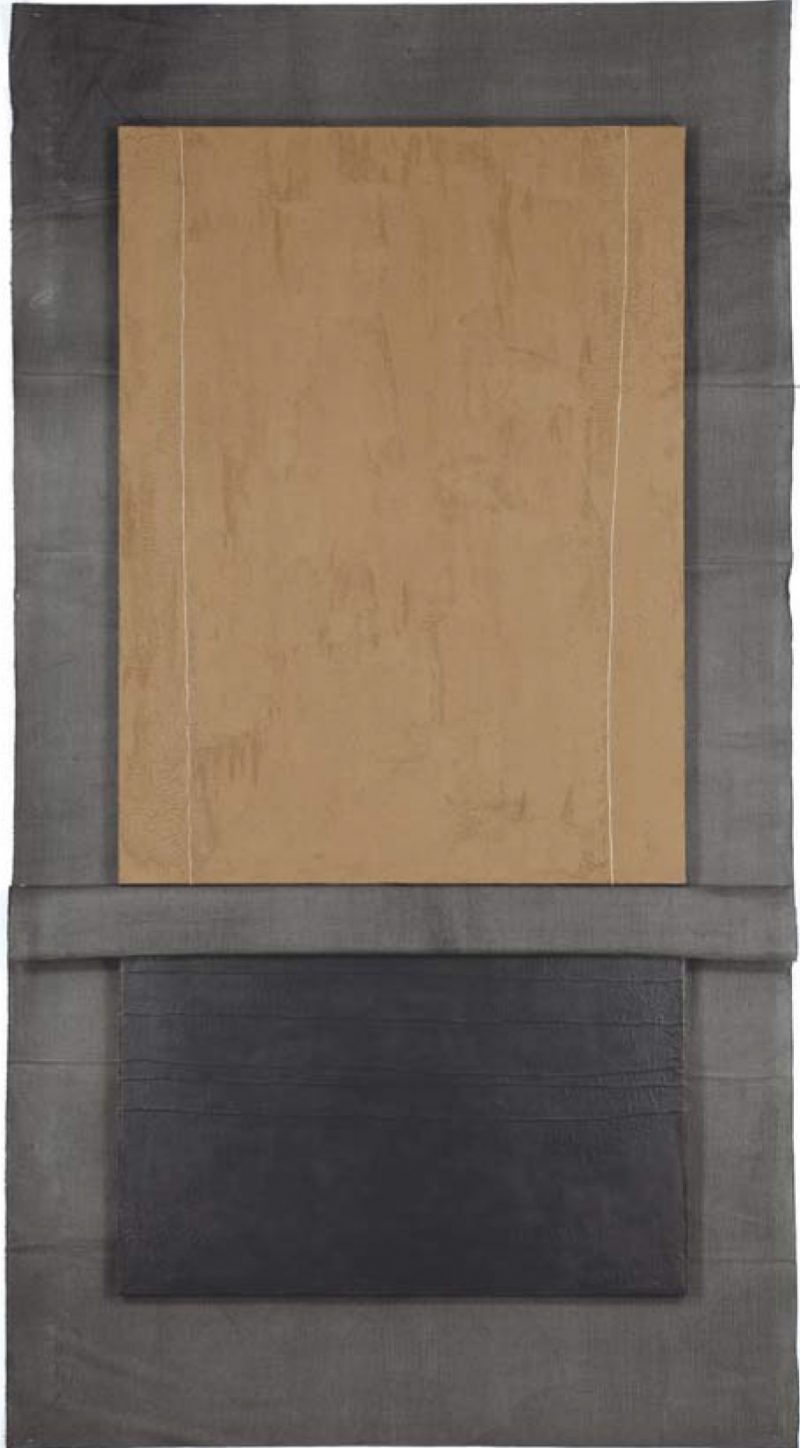Working within and beyond the confines of her studio, N. Dash creates works that range vastly in size and medium, while remaining deeply rooted in the landscape of New Mexico, where she discovered earth as a material for her paintings and where, when possible, she works in the open air. The intense relationship between her works—the small swaths of cotton she works in her hands until they have all but disintegrated, the black-and-white photographic documentation of these pieces, and her large-scale paintings made with adobe on jute—was quickly revealed in our conversation about Untitled in her studio in Long Island City, New York.
—Sara Roffino
Untitled, 2014
 THE BELIEVER: You’re a painter, right? How do you see yourself within the context of painting?
THE BELIEVER: You’re a painter, right? How do you see yourself within the context of painting?
DASH: I do consider myself a painter. Sometimes the methods and materials that I use to make the work are outside the traditional bounds of what painting is. Having said that, I use oil, linen, canvas, and other standard means that have been a part of the history of painting. Perhaps the most unconventional material that I use is mud, yet even that is an ancient painting material.
BLVR: I’ve read that you always carry small pieces of cotton, and work on them throughout the day. How are these pieces a part of everything else you do?
ND: I am constantly working them with my hands and therefore I take them with me wherever I go, but there isn’t a direct translation between the fabric works and the paintings. It is something that I have been involved with my entire life. The fabric pieces have an indirect influence on the rest of my work; they are at the root of everything. They function as source material.
BLVR: How did Untitled develop in the studio?
ND: This is an example of a work where graphite is applied directly to the adobe and the linen. The graphite takes on different characteristics depending upon what material it is applied to. In this instance, it was rubbed on to the adobe dry and into the linen wet. This work is unusual in that there is also a wooden stick, which functions as deadweight that turns the gap of the fabric into a kind of sheath.
BLVR: What about the physical content of some of the other paintings?
ND: I don’t consider the paintings to be a singular fact. No one material has more significance than the other. The paintings are made up of separate elements, either isolated or in combination.
BLVR: When did you begin working with earth in your paintings?
ND: I began working with dirt the moment I began making my fabric pieces. The dirt and oil from my hands accumulate and create a patina on the...
You have reached your article limit
Sign up for a digital subscription and continue reading all new issues, plus our entire archives, for just $1.50/month.
Already a subscriber? Sign in




